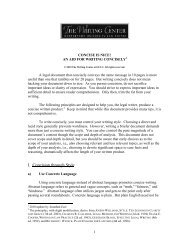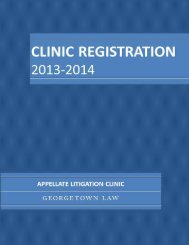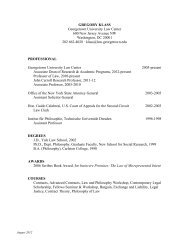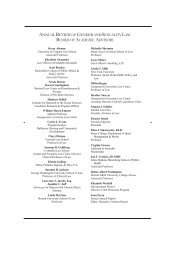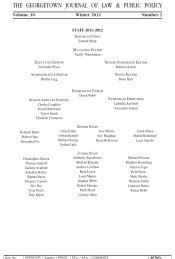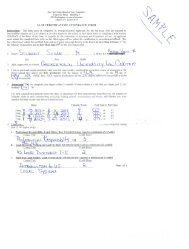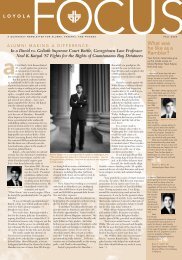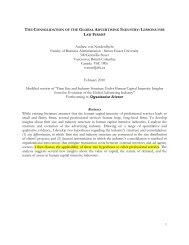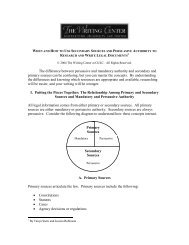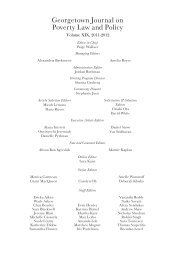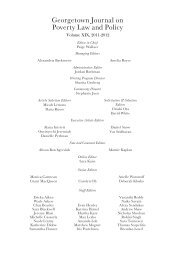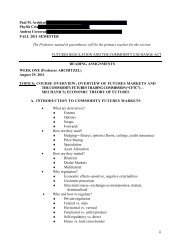Date: April 12, 2013 Topic: The Shrinking ... - Georgetown Law
Date: April 12, 2013 Topic: The Shrinking ... - Georgetown Law
Date: April 12, 2013 Topic: The Shrinking ... - Georgetown Law
You also want an ePaper? Increase the reach of your titles
YUMPU automatically turns print PDFs into web optimized ePapers that Google loves.
In this paper we build on recent progress in the area of plural sourcing and address<br />
these two limitations. In doing so we identify two mechanisms that help better understand the<br />
design and variability in plural sourcing strategies. First, resource co-specialization enhances<br />
the benefits of internalization. By resource co-specialization we refer to the synergistic gains<br />
that arise from the interaction of different resources within firm boundaries (Lippman et al.,<br />
2003; Teece, 1986). When firms outsource part of production they essentially position certain<br />
resources, e.g. personnel, equipment etc. outside of their boundaries. By doing so, they<br />
forego opportunities to harvest synergies resulting from resource combinations that increase<br />
their marginal productivity through on-going interaction, shared expertise, and knowledge<br />
spillovers (Dierickx et al., 1989; Kogut et al., 1992; Milgrom et al., 1995). Consequently, in<br />
cases of plural sourcing the extent of integration, or make, will increase when there are<br />
opportunities for resource co-specialization with other firm resources.<br />
Second, we highlight the impact of supplier concentration (Moeen et al., <strong>2013</strong>) on the<br />
relative importance of internal versus external suppliers in plural sourcing. Here we suggest<br />
that the number of suppliers chosen to outsource to is not independent of the proportion that<br />
is bought. A large number of suppliers leads, ceteris paribus, to high mundane transaction<br />
costs and reduces the benefits from relational contracting (Baker et al., 2002; Langlois,<br />
2006), resulting in the firm relying more heavily on make in plural sourcing. By contrast,<br />
when firms use a small number of suppliers, they will benefit from relational contracting and<br />
lower transaction costs and consequently buy more from their suppliers (Dyer, 1997; Moeen<br />
et al., <strong>2013</strong>).<br />
We develop our arguments in the context of corporate legal services, a setting where<br />
the use of both internal and external suppliers for the same input, known as multi-sourcing, is<br />
common (Sako, 2011; Susskind, 2008). We demonstrate that resource co-specialization<br />
drives the design of plural sourcing strategies as the balance tilts in favor of make when firms<br />
4



